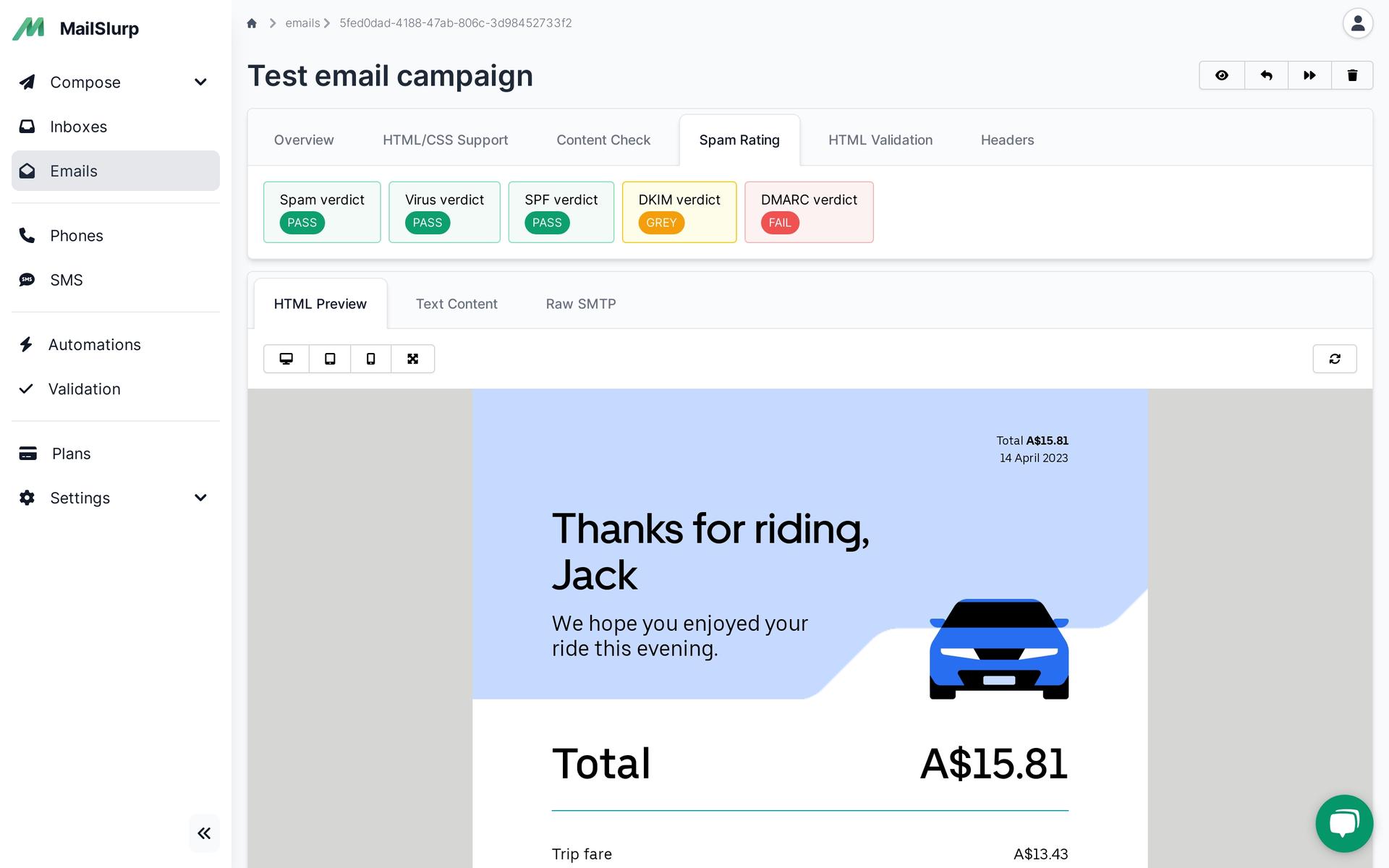Tutorials
Email and SMS guides for automation and testing.
Use PHPMailer to send emails with SMTP and MailSlurp mailservers. Configure IMAP and SMTP access in PHP using phpmailer and composer.
PHP is a great language for sending email with SMTP. PHP provides many functions for sending emails directly or by connecting to an SMTP server. In this post we will discuss the SMTP standard and different ways to send email in PHP using SMTP.
SMTP or simple mail transfer protocol is a standard way to exchange emails between servers and code. If you wish to send email in PHP using SMTP you must first determine the server you wish to connect to. This could be the SMTP server that hosts the recipients email account or your own SMTP server that will send on your behalf.
Most mail providers run an SMTP server on ports 25, 2525, 465 or 578. MailSlurp is a free email provider with an SMTP server available on the following ports:
| Protocol | Host | Port | TLS | Description |
|---|---|---|---|---|
| SMTP | mx.mailslurp.com | 2525 | false | SMTP server |
| SMTP | mx.mailslurp.com | 2525 | false | SMTP server |
| SMTP | mailslurp.mx | 587 | true | SMTP server |
| IMAP | mailslurp.click | 1143 | false | IMAP server |
As PHP is an old and venerable language there are many ways to send emails. The oldest method is the mail() function. The mail function has been available since PHP4 but it comes with some caveats. Firstly, it requires configuration using the system files. This can be difficult to set up. Modern PHP applications typically use a higher level library like PHPMailer.
Due to the limitations of the built-in function most developers recommend using the open source PHPMailer library. You can install the library using composer . Then include the libaries in your php code using vendor autoload to send email using SMTP in PHP.
To send SMTP emails in PHP import PHPMailer and configure an instance to use the port and hostname for your SMTP server.
If you use MailSlurp SMTP servers you can use the method to obtain your username and password:
To actually send an email, first connect to the server and then build the message in parts.
When sending emails from your PHP application consider testing email end-to-end using MailSlurp. MailSlurp is a free service for catching emails in disposable accounts. You can connect to servers using SMTP and then verify that emails were received:
PHP is a server-side scripting language that has been widely used for web development since its creation in 1994. One of its most popular use cases is sending emails. PHP has a number of features and advantages that make it an excellent choice for sending emails.
Firstly, PHP has built-in email functions that allow developers to easily send emails without the need for third-party libraries. The mail() function is a built-in PHP function that can be used to send emails from a PHP script. This function is simple to use and does not require any additional setup or configuration. The mail() function supports basic email functionality, such as sending text and HTML emails, as well as attaching files to emails.
Secondly, PHP has extensive support for email protocols, such as SMTP and IMAP. The PHPMailer library is a popular open-source library that provides a more advanced and feature-rich alternative to the built-in mail() function. PHPMailer supports sending emails via SMTP and includes support for sending attachments, using encryption, and other advanced features. PHPMailer also supports sending emails using third-party email services, such as Gmail and MailSlurp.
Thirdly, PHP has a large and active community of developers who contribute to the development and improvement of PHP email libraries. This community provides extensive documentation, examples, and support for PHP email libraries. Additionally, many third-party email services provide libraries and documentation for integrating their services with PHP.
Fourthly, PHP can be easily integrated with other web technologies and frameworks. For example, popular PHP frameworks such as Laravel and Symfony provide built-in support for sending emails. These frameworks make it easy to send emails using PHP and provide additional features, such as email templates and email queues!
In conclusion, PHP is a powerful and flexible language that is well-suited for sending emails. Its built-in email functions, support for email protocols, active developer community, and ease of integration with other web technologies make it a popular choice for developers who need to send emails from their web applications.
There are many other ways to send and receive email in PHP using SMTP. See the PHP developer docs for more information.
Email and SMS guides for automation and testing.
View github project code for multiple languages.
Latest posts from the MailSlurp team.
Try a free MailSlurp account.
Test, build, and automate messaging with a free MailSlurp account.
